Today, let’s focus on the laundry room and talk about 3 natural laundry product swaps: laundry detergent or soap, dryer sheets, fabric softener.
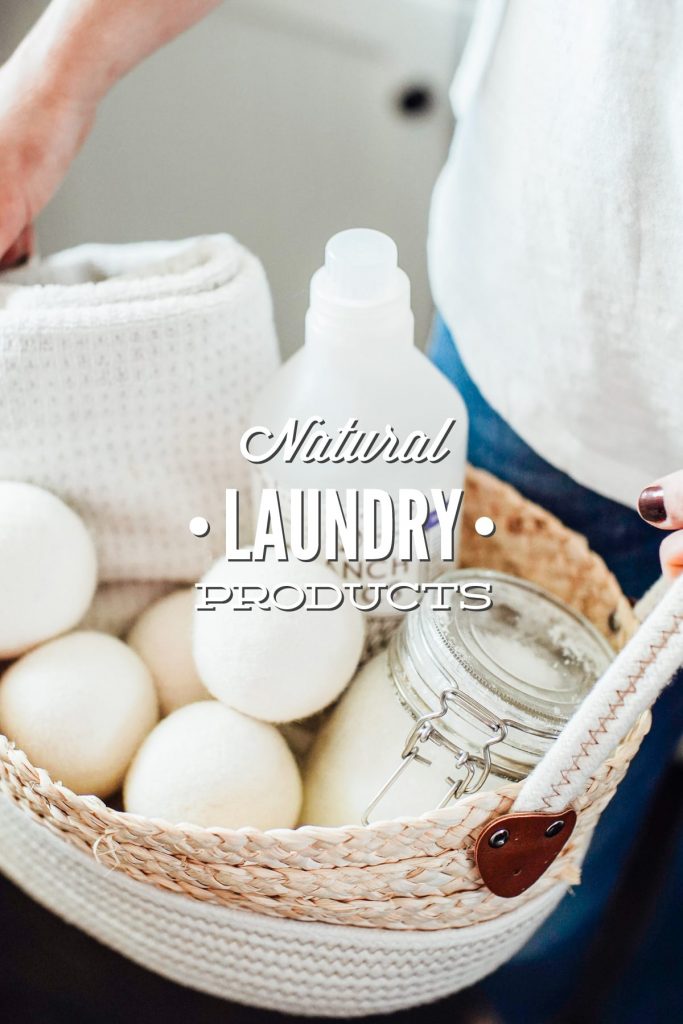
Want to Save This Article?
Enter your email & I’ll send it straight to your inbox. And you’ll get new recipes & tips each week.
How to Find Non-Toxic, More Natural Laundry Products
According to the Environmental Working Group, “The label on a typical cleaning product is a mix of marketing hype and instructions for use. What’s missing is a list of what’s inside. Cleaning products, unlike foods, beverages, cosmetics and other personal care products, are not required by federal law to carry a list of ingredients. This means that manufacturers have no reason to avoid risky chemicals that happen to clean well – even if they can trigger asthma attacks or skin rashes or are linked to cancer. Without full disclosure, consumers lack key information they need to select cleaning products made with safer ingredients.”
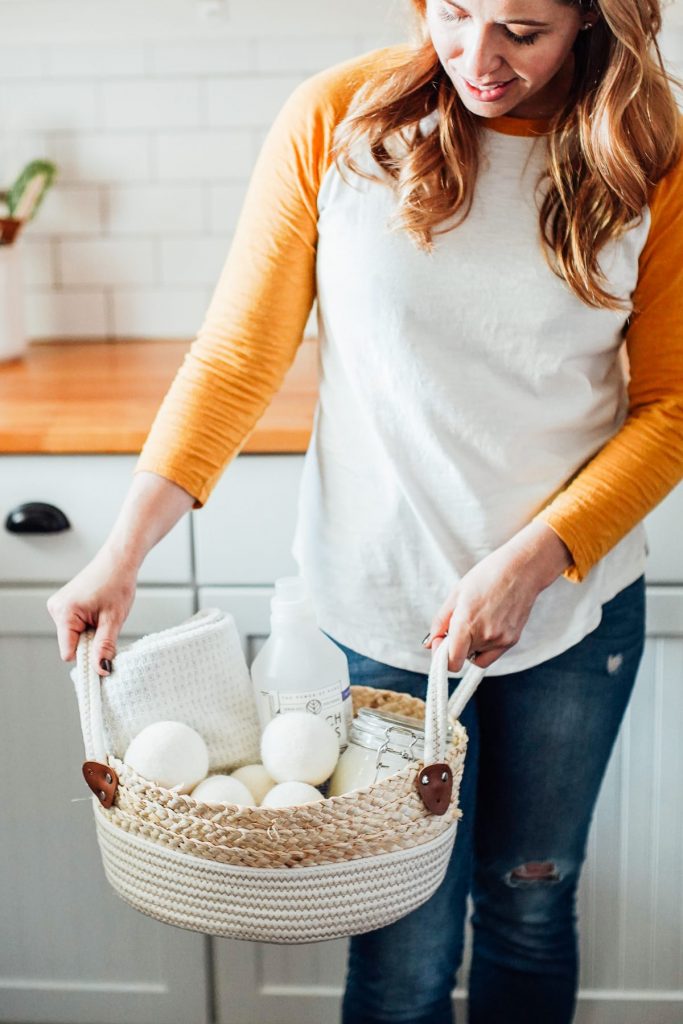
Because of this, it’s hard to know which cleaning products are made with safe ingredients and which products are potentially harmful. Here are 3 tips to help you find non-toxic, more natural laundry products…
- Search for a laundry products rating on either the Environmental Working Group’s website or the Think Dirty App. Both resources are provided by consumer watchdog groups, and neither are perfect but I do believe they’re a great place to start. Both databases will provide you with a score for how the product ranks on their toxicity scale.
- Check out a company’s transparency and disclosure of ingredients. The ingredients should be clearly listed, in full, on the laundry product. Is this company proud of their ingredients? Or, are they trying to distract you from what’s actually inside the bottle by using eye-catching marketing words or describing everything you won’t find in the product. Full disclosure of ingredients is key! It’s the only way we can make an informed choice about our laundry products.
- If you’re unsure about an ingredient, use Google or the EWG’s database to research the ingredient. Chemicals aren’t bad. After all, baking soda, air, and water are chemicals. The goal isn’t to eliminate chemicals. The goal is to use chemicals that are proven to be safe time after time. Too many of the chemicals used in our body and cleaning products can disrupt hormones, cause allergic reactions, etc. (Check out the 7 ingredients I avoid here.)
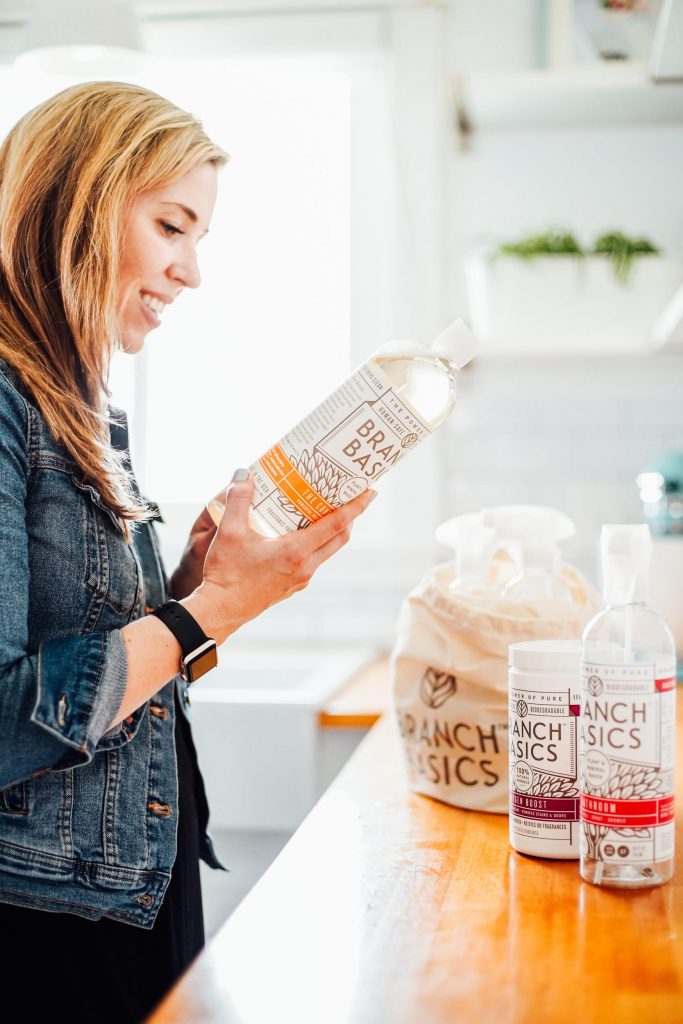
When you have the tools to educate yourself about ingredients and products, you have the power to make informed choices about what you consume (food), as well as what you use on your body and how you clean your home.
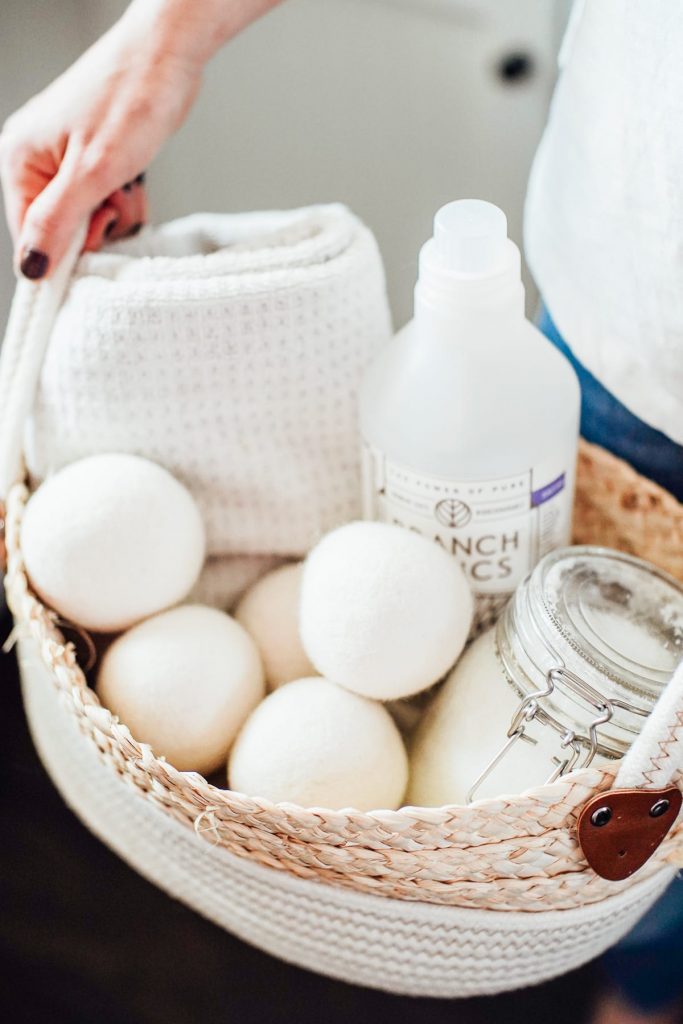
Over the years, I’ve experimented with a number of non-toxic, more natural laundry solutions, from laundry detergent to natural fabric softeners and dryer sheet alternatives. Today, I’m sharing my favorites with you from each of these laundry product categories. If you’re looking to go more natural in the laundry room, these swaps are a great place to start (and may encompass everything you need).
Natural Laundry Product Swap Tip
One of the easiest ways to make a healthier swap in the laundry room is to simply avoid fragranced products. By doing this one thing, you’ll automatically avoid a ton of undisclosed sneaky ingredients.
Remember when we talked about 7 ingredients to avoid?
Fragrance is on that list and one of the easiest ingredients (technically it’s made up of multiple ingredients that do not need to be disclosed) to identify and avoid.

Swap 1: Non-Toxic Laundry Soap or Detergent

This is the hardest area to change, because people (including myself) feel very attached to various brands and scents. I’ve experimented with a ton of laundry soaps over the years, and I’ve landed on a few favorites–ranging from do it yourself soap to safer store-bought detergents.
Here are my current favorites: Branch Basics (a multi-purpose concentrate that can be used for more than just laundry), Molly’s Suds, Better Life, Seventh Generation, Biokleen, and homemade laundry soap. I share about each one, in detail, over here.
As we talked about above in the laundry swap tip, one of the best places to start when making the switch to non-toxic, more natural laundry soap or detergent is to start by avoiding fragranced products. If you choose to use fragranced laundry soap or detergent, check the ingredient list to make sure they’re using essential oils, not mysterious “fragrance.” A natural fragrance won’t linger like you’re used to with Tide or Gain. This is a tell tale sign that the fragrance in your laundry product is made with less-than-desirable ingredients. An essential oil based scent will be subtle and dissipate after washing.
Swap 2: Use Vinegar or Salt For a Fabric Softener
When it comes to a natural fabric softener, there are two great options: vinegar or salt. Both options only require a simple kitchen ingredient.

Option 1: Vinegar
I get it, no ones wants their clothes to smell like salad dressing. Yuck! With the right amount of vinegar, you can achieve naturally soft clothes and towels without the salad dressing scent. To make this option, all you need is vinegar. Just add 1/2 cup of vinegar to each load of laundry. Check out this post for the details.
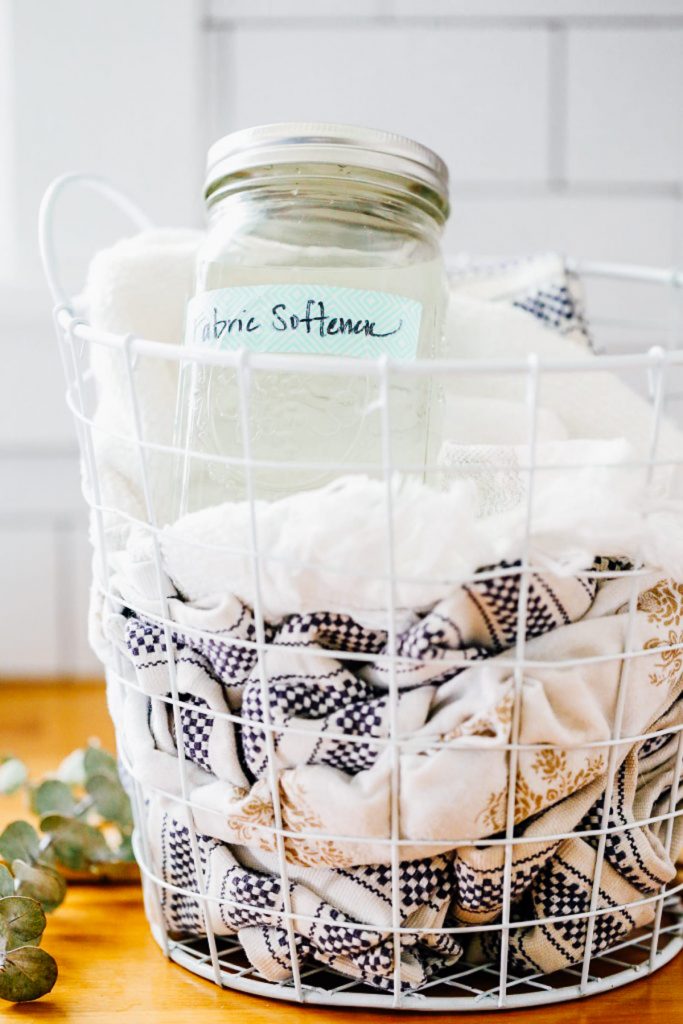
Option 2: Salt
The inspiration for this option came from reading the back of a Mrs. Meyer’s package. The homemade recipe is made with coarse salt and an optional essential oil, if you want a subtle scent. To make this option, you need: coarse sea salt and (optional) an essential oil for a subtle scent. Combine the ingredients in a jar. To use, add 1/2-1 cup per load of laundry. Check out this post for the details.
Swap 3: Use Dryer Sheet Alternatives
Option 1: Wool Dryer Balls
A few years ago, I started using wool dryer balls as an alternative to dryer sheets. They cut drying time (around 10-25%), keep static down (attach a safety pin to each ball if you have static issues), and reduce wrinkles in clothing. If you want to add a natural scent (to mimic a dryer sheet), add a few drops of your favorite essential oil to each ball. I love lemongrass. You’ll need to repeat this every few loads to maintain the scent.
If you’re a crafty kind of person, you can easily make dryer balls. If not, there are a number of ready-made options on the market. Look for 100% wool balls that are free of any fragrance. I purchased my dryer balls from Amazon.
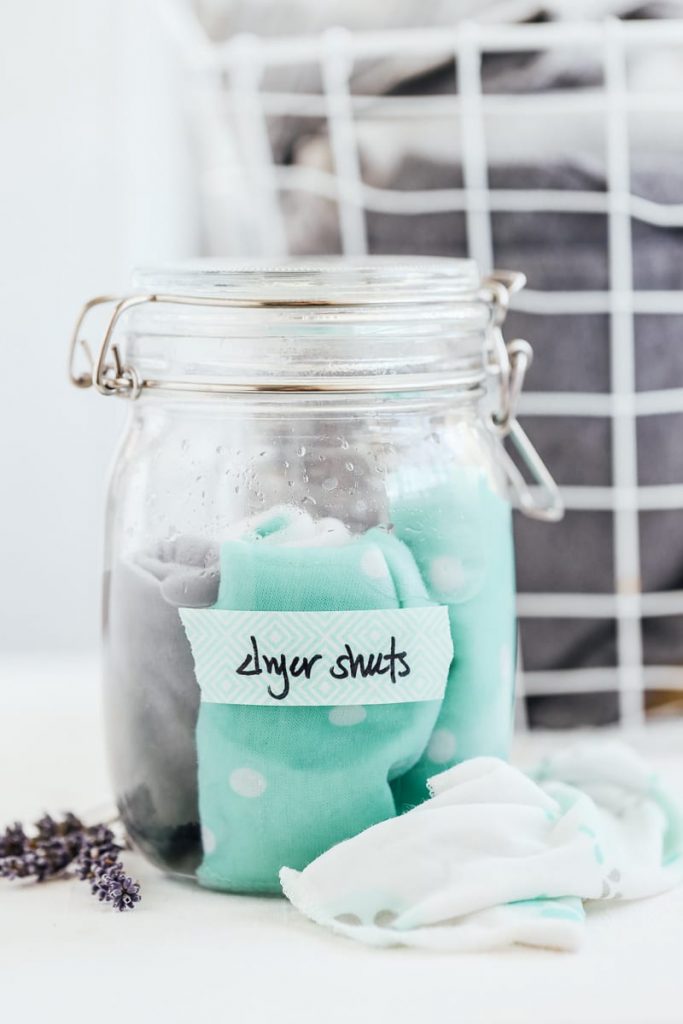
Option 2: Reusable Dryer Sheets
This option uses vinegar as a fabric softener. This option won’t help with static, but if you want more of a dryer sheet and less of a ball, this is for you. Plus, this option is 100% reusable, just like the dryer balls.
To make your own dryer sheets, you need: 2 cups vinegar, 50 drops cleaning essential oil, 10 8-inch square cloths (such as: baby washcloths, small towels, cut-up old shirts, etc.). Combine the vinegar and essential oil in a storage jar. Add the cloths to the jar, submerging the cloths in the liquid. Add 1-2 cloths to the dryer. The cloths won’t reduce static cling, but will soften laundry and add a fresh scent. Return the cloths to the jar after use. This recipe comes from my cleaning book.
Option 3: Store-Bought Dryer Sheets
If you want to use an actual dryer sheet, from the store, I think the best option out there is from Seventh Generation. Both the scented and unscented versions rate as a B with the Environmental Working Group, and the ingredient list is very transparent. You can find Seventh Generation at most stores, from Target to Whole Foods and Amazon.

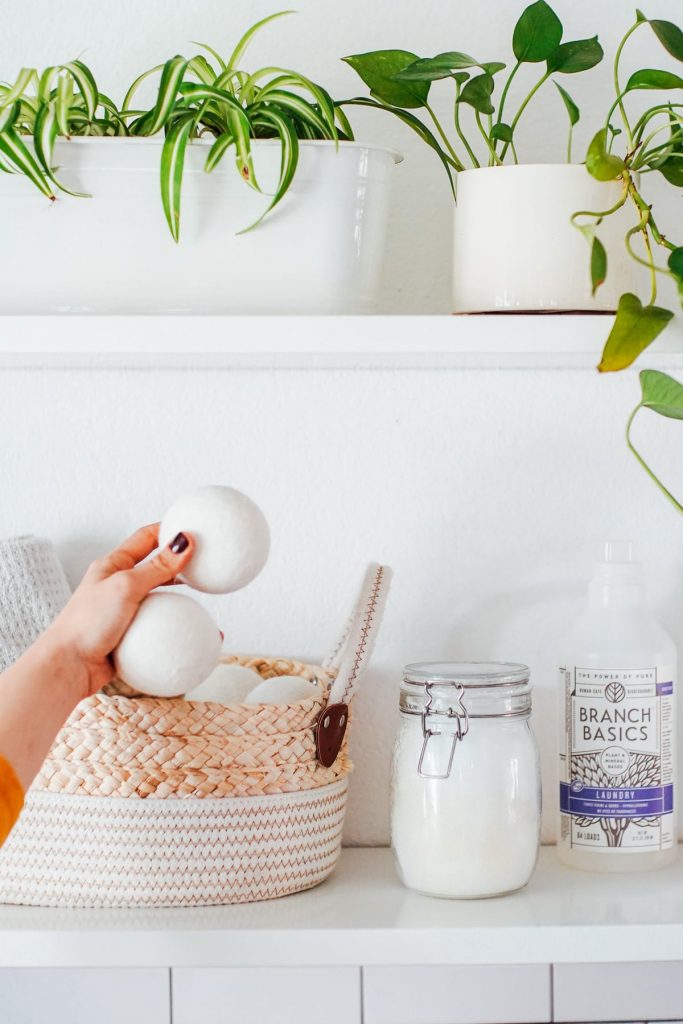
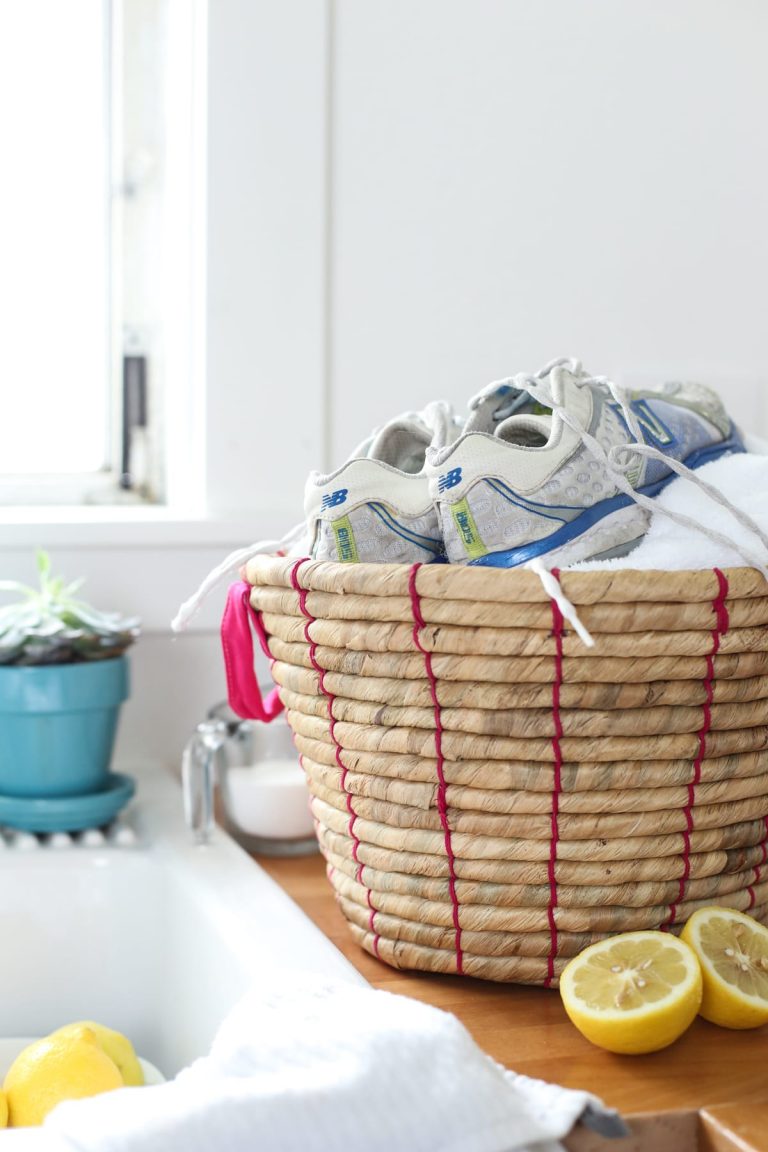
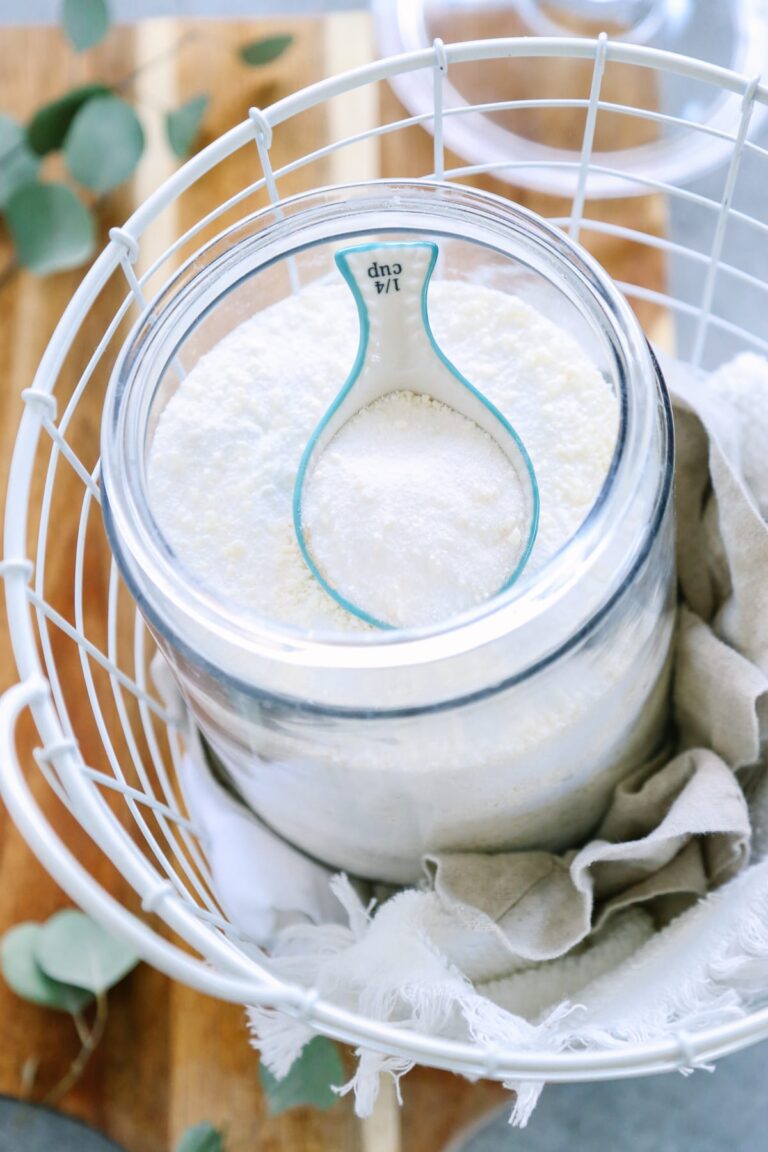
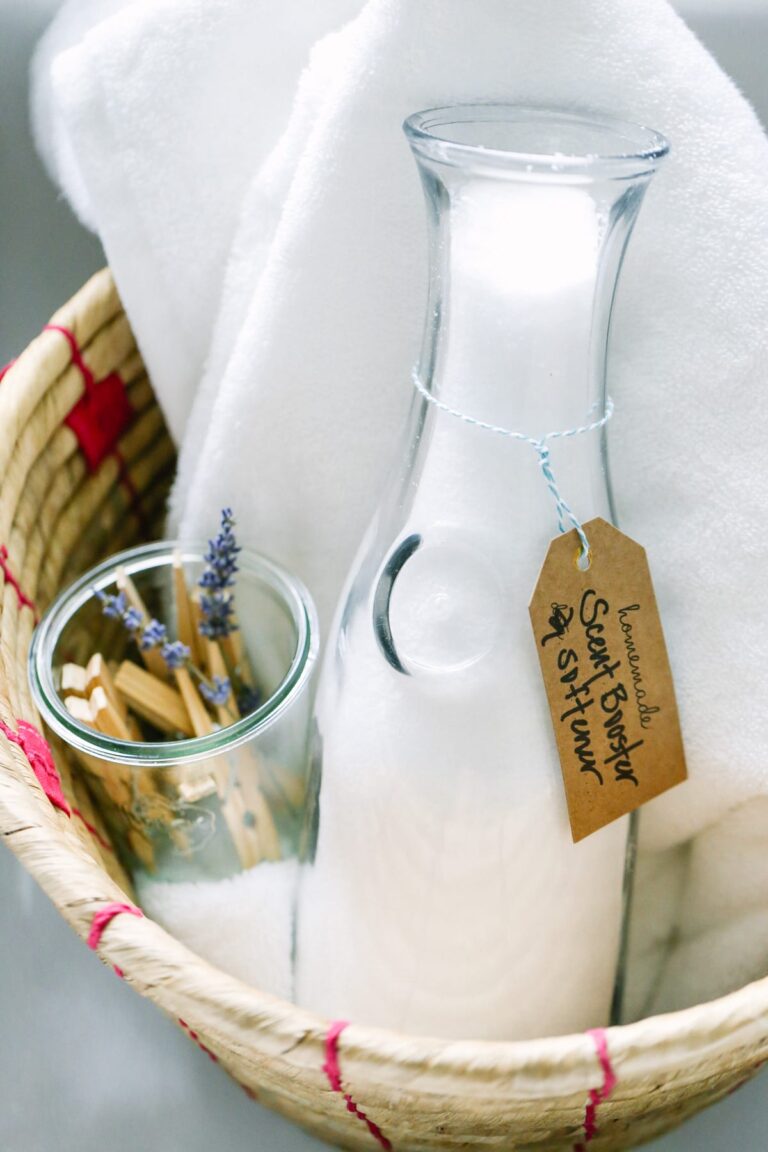

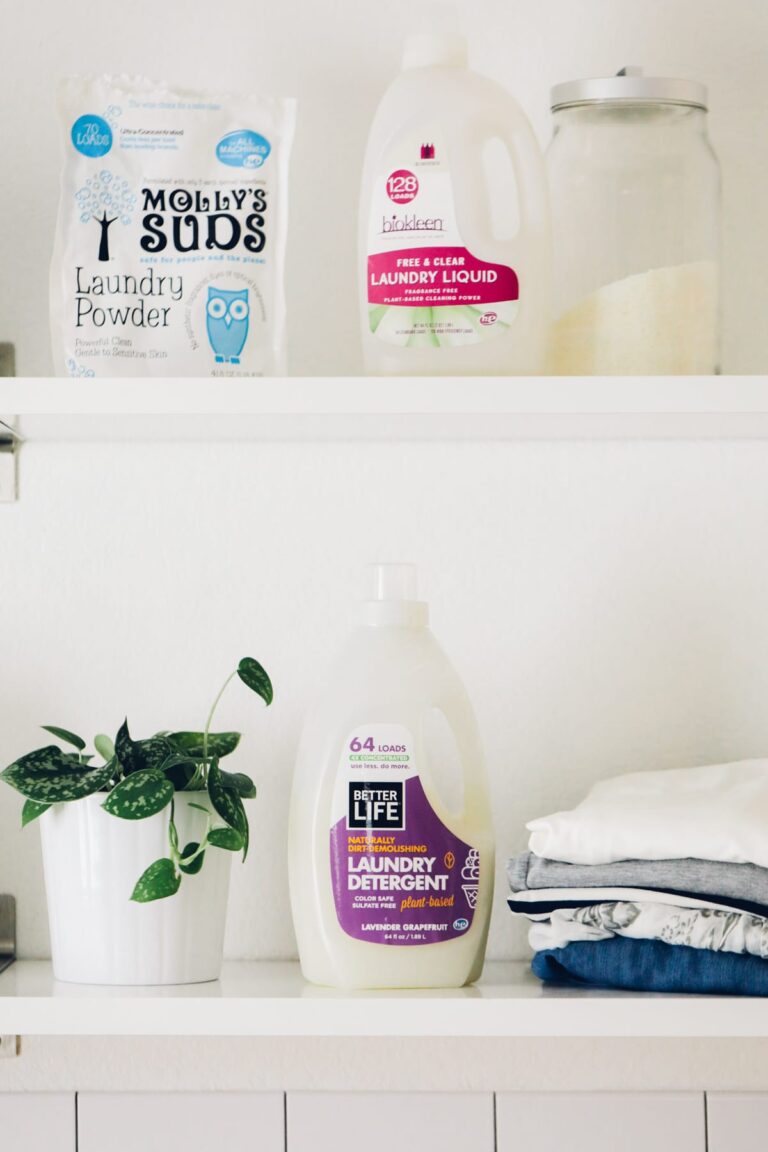
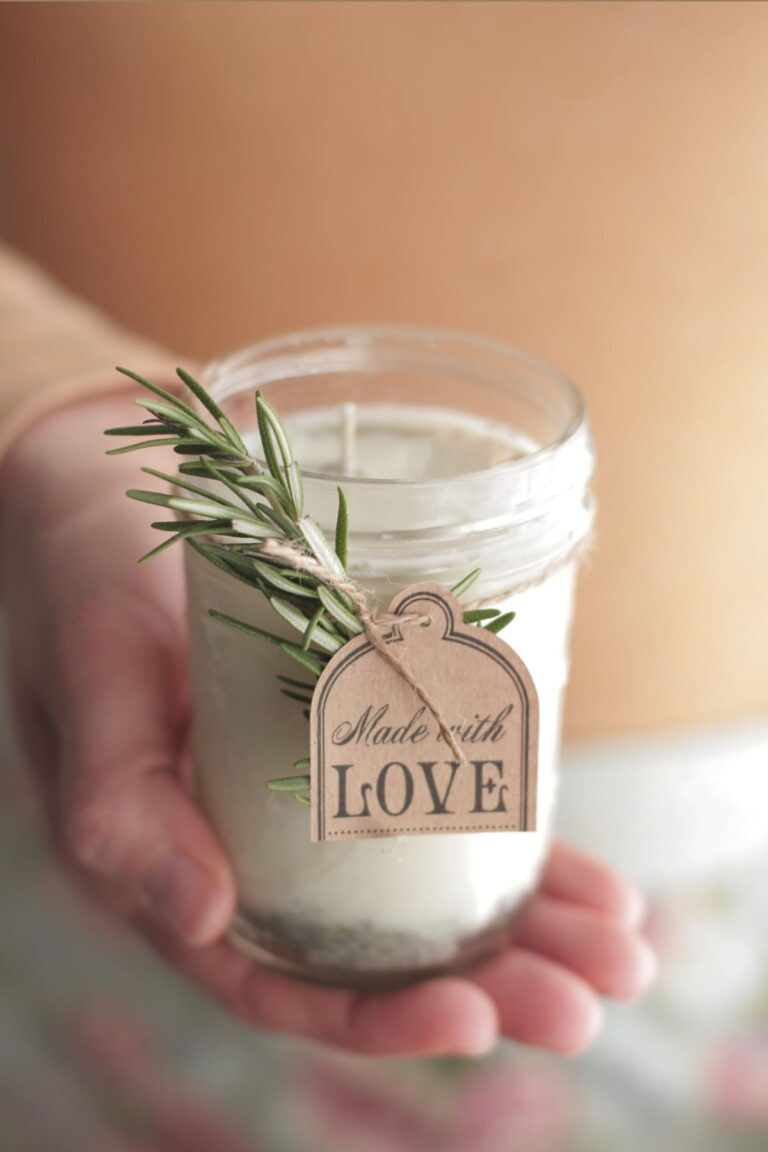
Thank you for your information, I’m excited to try some new things. How many dryer balls do you put into a dryer with a full load? And do they last for a long time, when do you know you need to buy new ones? I also love having a scent on my clothes, I think it is psychological and I feel they are more clean if they smell good. Any tips for still having a scent in your clothes that is natural?
Hey Susan, I use 3-4 dryer balls. Mine have lasted for years. You could add an essential oil to each ball before use, repeat every so often.
Hello! Thank you for all your wisdom!!
I recently discovered that during my second pregnancy I developed an allergy to bleach . Do you have an alternative (other then sunning) to bleach?
Hey Nicole, I use this recipe: https://livesimply.me/homemade-bleach-alternative-3-ingredient-whitening-solution/
I love your approach to food and cleaning supplies! Do you have a recipe for a homemade laundry detergent? Thanks, Beth Foushee
Thank you, Beth! I do: https://livesimply.me/switching-to-natural-products-laundry-detergent-and-soap/